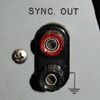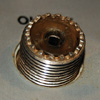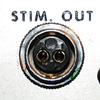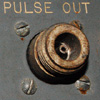 Bananas, quite possibly the perfect connector.
Bananas, quite possibly the perfect connector.
Connectivity. This is a simple subject that can be easy to overlook.
When I had just a couple of these things I opted to just make a special cable with OE connector (or bare wires) on
one end and a 1/4" on the other. These days, I'm prone to explore interconnectivity with more devices,
and have been trying to make strides in standardizing as many of my connectors as I can, because nothing
sucks like trying to find a third BNC to female N cable in a rat's nest of a hundred different wire
configurations.
So, I will outline some of the more common types of connectors I've come across and provide my thoughts and observations of each format so you can hopefully make a more informed decision on how you wish to proceed with your set-up.
I'll assume you already know about the standard audio interconnect formats, normalization, the difference between balanced and unbalanced signals and have a loose understanding of gain staging. Actually, that last bit is not really important to the matter at hand, but investigate it anyway if it's still a mystery to you.
As follows is a handful of the more common types of non-audio connectors with pages dedicated to each, simply click the image of the format you are interested in. Below that is a link to a page that will place a name with a face, but involves either connectors that are typically allocated to non signal related tasks or ones I have elected to change out for one reason or another, and hence have no justified opinion on.
 Bananas, quite possibly the perfect connector.
Bananas, quite possibly the perfect connector.
 UHF, a versatile threaded connector
UHF, a versatile threaded connector
 The 2501, simplest of threaded connectors.
The 2501, simplest of threaded connectors.
 80MC2M, two pin threaded microphone connector.
80MC2M, two pin threaded microphone connector.
 N connector, the higher frequency cousin of the UHF.
N connector, the higher frequency cousin of the UHF.